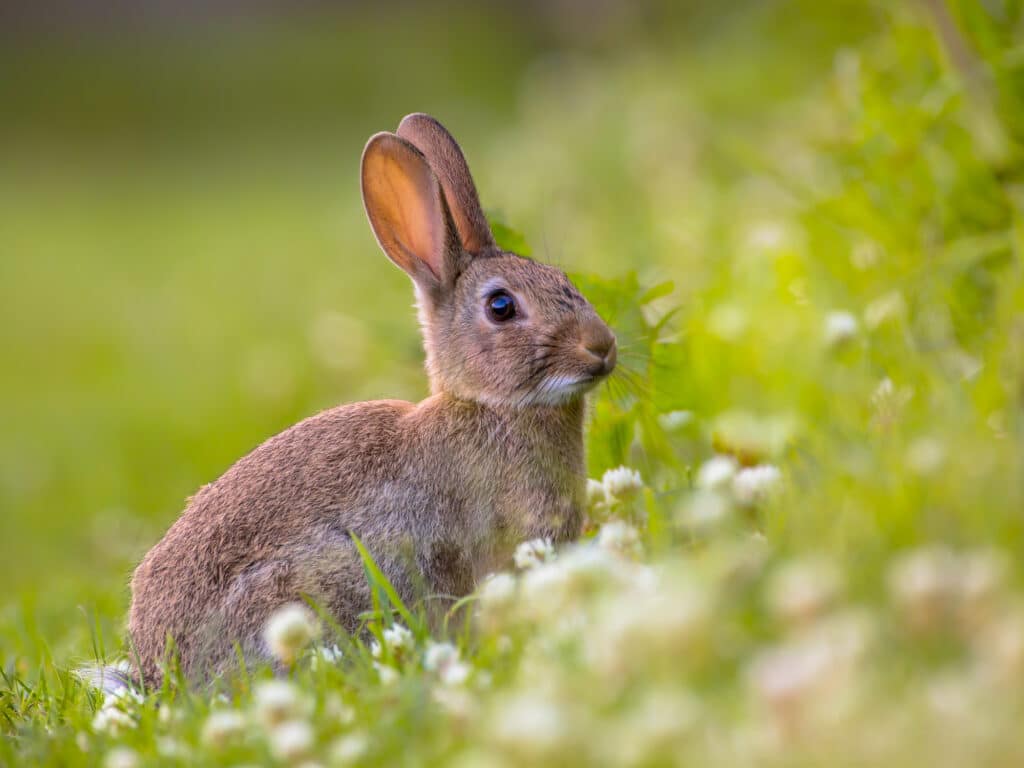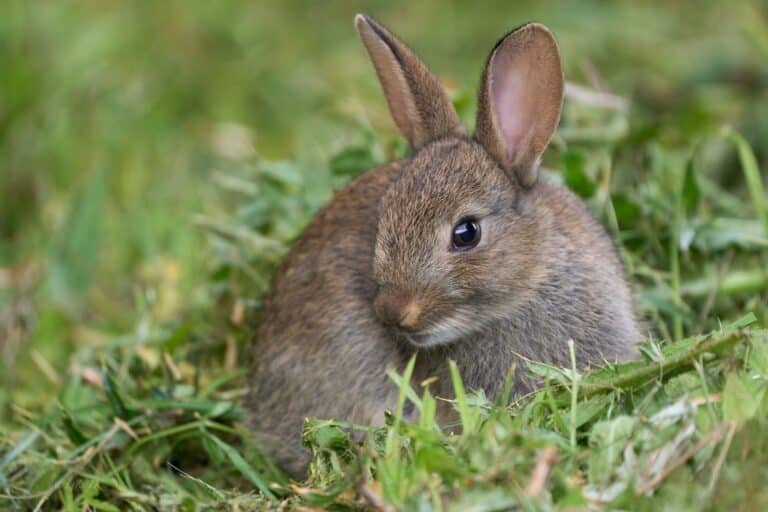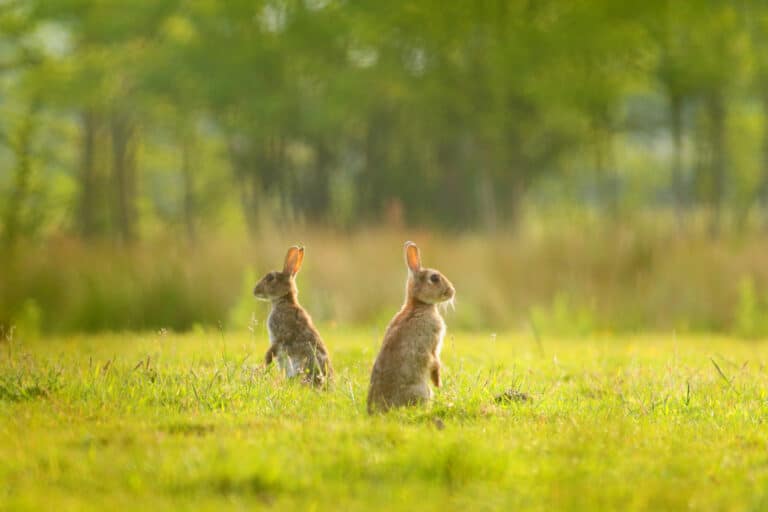Facts about the European Rabbit
Scientific name: Oryctolagus cuniculus
At a glance
- Native to the Iberian Peninsula, rabbits were brought to the UK by Romans as pets and to eat.
- The arrival of myxomatosis in the UK in 1953 saw a staggering 99% death rate in rabbits.
- Rabbits are now so established in many ecosystems that declines are impacting native animals that prey on them.

While it may be one of the most familiar and easily-recognised of all ‘our’ mammals (thanks to featuring in numerous books and films as well as being a popular pet), the European Rabbit is actually native to the Iberian Peninsula (where they were historically a key part of the diet of the Iberian Lynx and Spanish Imperial Eagle), western France, and the northern Atlas mountains in Northwest Africa.
Rabbits have been introduced around the world, principally for their fur and meat (and a rather notorious reputation for reproduction, of course) and, based on the re-examination of a bone found at a Roman palace more than half a century ago, were probably brought to the UK by the ancient Romans who kept them confined as pets. While still common in parts of the UK, the species is now rare across most of their original range: in 2005, the Portuguese Institute for Nature Conservation and Forests classified it as Near Threatened in Portugal and in 2006 it was reclassified in Spain as Vulnerable. In 2018, the IUCN looked at the most recent data and reclassified the rabbit in Spain, Portugal and France as “Endangered”.
Declines seem to have begun with over-hunting, but in 2017 the European Parliament stated that “a decline in population of approximately 30% over the last 10 years…has chiefly been caused by the myxomatosis virus, the viral haemorrhagic disease (VHD) and habitat loss”.
Rabbits can become serious consumers of crops in areas where their numbers build, and for that reason some countries where they have been introduced might want to see the eradication of rabbits entirely (Australia, for example saw an explosion in rabbits at the same time as immigrants to the country were exterminating native predators), but both myxomatosis and VHD are horrible diseases causing immense suffering and are now considered endemic across the globe.

While it may be one of the most familiar and easily-recognised of all ‘our’ mammals (thanks to featuring in numerous books and films as well as being a popular pet), the European Rabbit is actually native to the Iberian Peninsula (where they were historically a key part of the diet of the Iberian Lynx and Spanish Imperial Eagle), western France, and the northern Atlas mountains in Northwest Africa.
Rabbits have been introduced around the world, principally for their fur and meat (and a rather notorious reputation for reproduction, of course) and, based on the re-examination of a bone found at a Roman palace more than half a century ago, were probably brought to the UK by the ancient Romans who kept them confined as pets. While still common in parts of the UK, the species is now rare across most of their original range: in 2005, the Portuguese Institute for Nature Conservation and Forests classified it as Near Threatened in Portugal and in 2006 it was reclassified in Spain as Vulnerable. In 2018, the IUCN looked at the most recent data and reclassified the rabbit in Spain, Portugal and France as “Endangered”.
Declines seem to have begun with over-hunting, but in 2017 the European Parliament stated that “a decline in population of approximately 30% over the last 10 years…has chiefly been caused by the myxomatosis virus, the viral haemorrhagic disease (VHD) and habitat loss”.
Rabbits can become serious consumers of crops in areas where their numbers build, and for that reason some countries where they have been introduced might want to see the eradication of rabbits entirely (Australia, for example saw an explosion in rabbits at the same time as immigrants to the country were exterminating native predators), but both myxomatosis and VHD are horrible diseases causing immense suffering and are now considered endemic across the globe.

Equally importantly, rabbits have become so established in many ecosystems that their loss is impacting the native animals that prey on them, including raptors and stoats and (in Scotland) the Wildcat. The arrival of myxomatosis in the UK in 1953 saw a staggering 99% death rate in rabbits, severely impacting Common Buzzards that were just starting to recover from decades of persecution. Rabbits make up quite a large proportion of the diet of foxes, especially in rural areas: a declining rabbit population typically encourages ‘countryside managers’ to step up fox control to protect pheasants.
Whether an important prey item or not, as a non-native species rabbits have no legal protection in Britain. Since the Pest Acts 1954 (which was put forward in response to huge agricultural losses), landowners in so-called ‘rabbit clearance areas’ have been legally obliged to remove all rabbits, and rabbits were excluded from the Hunting Act which banned the hunting of wild mammals with hounds.
